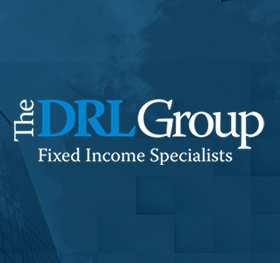This week, the Federal Reserve Open Market Committee Meeting kicks off its May policy meeting. Expectations are that the Fed will maintain its position and wait for more hard facts to support the decision to lower interest rates, possibly making its first move to reducing rates in June or July.
The Fed’s target rate is 2% (1), and as of March, consumer inflation figures reflected a 2.45% year-over-year rise (2). While this level is low, expectations are that the current global tariff policy will raise costs for consumers and drive inflation numbers higher.
Many corporate and private business owners find themselves in a state of uncertainty as stagflation looms over the economic landscape. This pause in activity puts the Federal Reserve in a difficult position; the Trump administration is pushing for a rate cut, while most of Wall Street recognizes that the Fed needs more solid data to perform its dual mandate decision-making. With careful deliberation, the Fed aims to navigate the inflation issue without acting too early or too late.
Currently, there is a lot of discussion about supply chain disruptions. Reports indicate that activity at the Port of Los Angeles and other ports around the country have decreased significantly already, and industries that support these ports are bracing for the worst. Shipping companies are canceling routes, and truckers are dealing with fewer loads, which raises concerns about potential supply shortages and increased prices. This situation could worsen if not addressed quickly.
With recent supply issues related to COVID still fresh in consumers’ minds, there is a fear that people might start stockpiling limited supplies again, which could drive prices even higher. This is a significant concern that the Federal Reserve must consider. Committee members are trying to ensure they accurately understand the situation before taking any action, to avoid misdiagnosing the problems at hand.
In some ways, the Federal Reserve is in a “no-win” situation with any decision it makes at this time. Given that our economic figures from the first quarter, before the tariffs, are now behind us, and the data following the tariffs has yet to materialize, the decision is certainly like walking a tightrope.
Subscribe Now to The Muni Market Insider – Your Ultimate Guide to Tax-Free Investing!
Stay Ahead of the Curve with expert analysis on:
- Top-rated municipal bonds with strong credit ratings
- Tax-advantaged opportunities to maximize your returns
- Market trends & economic shifts impacting local governments
- Exclusive interviews with leading muni bond strategists
"*" indicates required fields
Sources:
(1) Federal Reserve https://www.federalreserve.gov/monetarypolicy/2025-02-mpr-part3.htm
(2) US Bureau Statistics https://www.bls.gov/news.release/cpi.nr0.htm#:~:text=All%20items%20less%20food%20and%20energy%20The%20index%20for%20all,over%20the%20past%2012%20months.
The content is developed from sources believed to be providing accurate information. The information in this material is not intended as tax or legal advice. Please consult legal or tax professionals for specific information regarding your individual situation. The opinions expressed and material provided are for general information, and should not be considered a solicitation for the purchase or sale of any security.


